Increasing the Participation of People with Disabilities in Engineering Research Centers (2016)
Proceedings from the 2016 AccessERC capacity building institute
This publication shares the proceedings of a capacity building institute (CBI) entitled Increasing the Participation of People with Disabilities in Engineering Research Centers (ERCs). The content may be useful for people who
- participated in the CBI
- work on diversity goals within ERCs or postsecondary engineering departments
- seek to increase their understanding of issues surrounding the participation of individuals with disabilities in ERCs
- would like to access resources to help make ERC courses, products, and activities more welcoming and accessible to students with disabilities
- have promising practices to share with others
- would like to conduct a similar CBI
About AccessERC
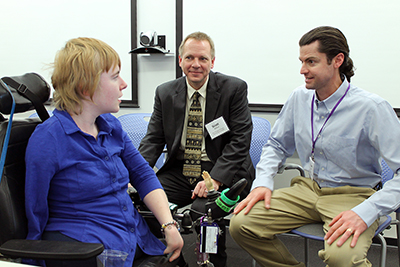
The goals of AccessERC are (1) to make ERC activities and products welcoming to, accessible to, and usable by people with disabilities and (2) to increase the engagement of individuals with disabilities in ERCs. AccessERC staff work with ERCs across the country to reach the following objectives for ERCs:
- Activities: Increase knowledge, skills, and actions in recruiting, accommodating, and engaging people with disabilities in leadership, advisory boards, research teams, internships, presentations, workshops, engineering labs, and other activities.
- Materials: Increase knowledge, skills, and actions in making websites, curriculum materials, online learning, video presentations, engineering labs, and other products more welcoming to, accessible to, and usable by individuals with disabilities.
- Consultation: Offer individual consultation to ERCs regarding accessible products and activities as well as on accommodations for specific individuals with disabilities engaged in their activities and offer ERC participants (and potential ones) with disabilities opportunities to engage in an existing online mentoring and peer support community hosted by DO-IT.
To reach its goals and objectives, AccessERC staff conduct training and community-building activities that include an online community of practice, on-site capacity building institutes, webinars, and individual consultation. AccessERC provides financial support to ERCs to conduct relevant activities (e.g., conference attendance to a disability-related conference for staff, focus group or panel of students with disabilities, guest speaker with a disability, internship in the ERC, STEM conference attendance for a student with a disability). AccessERC staff also develop and deploy resources to help current and future ERCs work toward reaching project goals and objectives.
AccessERC is funded by the National Science Foundation as a supplement to an existing ERC, the Center for Sensorimotor Neural Engineering (CNT), headquartered at the University of Washington in Seattle. The CNT has excelled in the ERC community at including individuals with disabilities in research, leadership, and education. The ultimate impact of AccessERC is to increase the successful participation of people with disabilities in STEM and improve these fields with their perspectives and expertise.
About the CBI
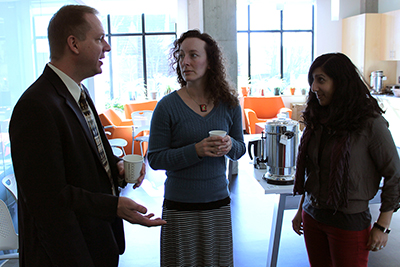
The AccessERC CBI, Increasing the Participation of People with Disabilities in Engineering Research Centers, provided a forum for sharing interventions and strategies that promote the full inclusion of people with disabilities in ERCs. More than twenty-five participants from ERCS across the United States were in attendance.
The CBI provided a forum in which to share expertise, practices, suggestions for future collaborations, and funding ideas. Broad issues discussed included the following:
- Recruiting individuals with disabilities into significant roles
- Understanding disability culture and the history of disability civil rights
- Ensuring the accessibility of ERC websites, curriculum materials, online learning, video presentations, engineering labs, and other products
- Promoting universal design and accessible IT
- Providing reasonable accommodations to individuals with disabilities
- Exploring opportunities for collaboration
In small working groups, participants responded to the following questions:
- What strategies used to recruit other underrepresented groups at your ERC could be repurposed for use in recruiting people with disabilities?
- What can be done at our ERC to engage faculty and staff (e.g., web developers, curriculum & product developers, distance learning providers), about accessible IT?
- Where can we link to appropriate resources from our ERC website?
- In what ways can ERCs contribute to AccessERC products (e.g., website, Knowledge Base), activities, and initiatives?
- How do the viewpoints of the student panelists and individuals in the documentary Fixed affect how you would communicate with, recruit, and/or work with people with disabilities in your ERC?
In this CBI
- all participants contributed to its success;
- experts in many related topic areas were in the audience; and
- new concepts evolved from discussions.
The CBI was comprised of presentations, panel discussions, and group discussions. CBI participants shared their diverse perspectives and expertise. The agenda for the CBI and summaries of the presentations are provided on the following pages.
CBI Agenda
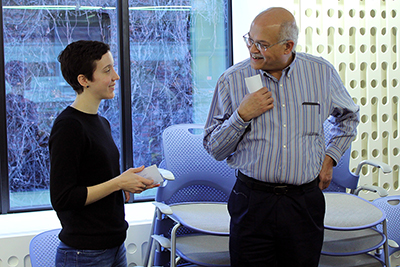
Tuesday, February 23
7 – 9pm
Networking Reception
Wednesday, February 24
8 – 9am
Breakfast and Networking
9 – 9:30am
Welcome and Introductions
Rajesh Rao, Director of CNT, PI of AccessERC
Sheryl Burgstahler, DO-IT Director, CNT Diversity Director, and Accessible Technology Services (ATS) Director
Scott Bellman, CNT Diversity Manager, DO-IT Program Manager
9:30 – 10:30am
Accommodations and Universal Design
Sheryl Burgstahler
10:45 – 11am
Video: STEM and People with Disabilities
11 – 11:30am
UW’s MakerSpace: A Case Study of Accessible Engineering
Kat Steele, Assistant Professor, UW Mechanical Engineering
11:30 – 12pm
CNT Promising Practices
Eric Chudler, CNT Executive Director and Education Director
Scott Bellman
12 – 1pm
Working Lunch
What strategies used to recruit other underrepresented groups at your ERC could be repurposed for use in recruiting people with disabilities?
1 – 2pm
Report Out from Working Lunch & Discussion
2 – 2:30pm
Disability Resources for Students
Bree Callahan, Director, UW Disability Resources for Students
2:40 – 3:30pm
Web Accessibility
Terrill Thompson, DO-IT Technology Accessibility Specialist, UW ATS
3:30 – 4:15pm
Access Technology and Accessible IT
Hadi Rangin, IT Accessibility Specialist, UW ATS
Doug Hayman, Senior Computer Specialist, UW ATS
4:30 – 5pm
Tour UW’s Access Technology Center & D Center
Hadi Rangin
6 – 8 pm
Dinner
Discussion: What can be done at our ERC to engage faculty and staff (e.g., web developers, curriculum & product developers, distance learning providers), about accessible IT? Where can we link to appropriate resources from our ERC website?
Thursday, February 25
8 – 9am
Breakfast and Networking
9 – 9:45am
Disability Identity: Understanding Disability Culture
Kayla Brown, UW DO-IT Program Coordinator
9:45 – 10:30am
Interactive Session: AccessERC Team Building
Scott Bellman
10:30 – 11:15am
Universal Design of E-Learning: What Faculty Need to Know
Sheryl Burgstahler
11:30 – 12pm
AccessERC Products, Activities, and Initiatives
Sheryl Burgstahler
Scott Bellman
12 – 1pm
Lunch
Discussion: In what ways can your ERC contribute to AccessERC products (e.g., website, Knowledge Base), activities (some funded with minigrants?), and initiatives?
1 – 1:20pm
Report Out from Working Lunch
1:20-1:30pm
Video: Disability Sensitivity Training Video
1:30 – 2:30pm
Student Perspectives: A Panel Presentation
Facilitators: Chet Moritz, CNT Deputy Director, Scott Bellman
Hannah, UW Pre-Engineering (CNT Summer Participant)
Jessie, UW Informatics (CNT Summer Participant)
Reni, UW Physics (CNT Summer Participant)
Cindy, UW Grad Student, Human-Centered Design in Engineering
Kayla, UW Law, Society, and Justice
2:30 – 3:30pm
Film: Fixed: The Science/Fiction of Human Enhancement
3:30 – 4:15pm
Discussion: How do the viewpoints of the student panelists and individuals in the documentary Fixed affect how you would communicate with, recruit, and/or work with people with disabilities in your ERC?
4:15 – 4:45pm
Engineering Design: Prosthetic Arm Challenge
Sheryl Burgstahler
Friday, February 26
8 – 9am
Breakfast and Networking
9 – 9:15am
Daily Overview
9:15 – 10:30am
Equal Access: Universal Design of an Academic Department/ERC
Sheryl Burgstahler
10:45 – 11:30am
AccessERC Action Planning Worksheet
Scott Bellman
11:30 – 11:45am
Wrap up: Where do we go from here?
Evaluation
11:45 – 1pm
Lunch, networking and discussion
How can we continue to work together to promote the participation of people with disabilities in ERCs? Who else might play a role?
Presentation Summaries
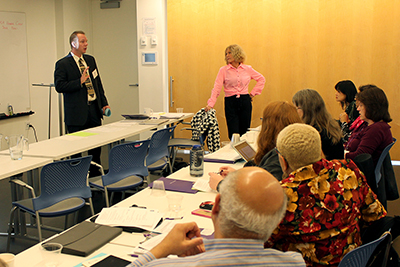
Accommodations and Universal Design
Presenter: Sheryl Burgstahler
Ability exists on a continuum, where all individuals are more or less able to see, hear, walk, read print, communicate verbally, tune out distractions, learn, or manage their health. In K-12 education in the United States, every child is ensured a free, appropriate education in as integrated of a setting as possible. However, in postsecondary education, students must meet whatever course or program requirements apply and are offered reasonable accommodations as needed.
Accommodations and universal design (UD) are two approaches to access for people with disabilities. Both approaches contribute to the success of students with disabilities. Accommodations are a reactive process, providing access for a specific student and arise from a medical model of disability. Students might be provided with extra time on tests, books in alternate formats, or sign language interpreters.
In contrast, UD is a proactive process rooted in a social justice approach to disability and is beneficial to all students. UD is designing products and environments to be usable by all people, to the greatest extent possible, without the need for adaptation or specialized design. A UD approach can benefit people who face challenges related to socioeconomic status, race, culture, gender, age, language, or ability. Applying UD to information technology would include building in accessibility features and also ensuring compatibility with assistive technology. In other words, a universally designed website would have text alternatives for graphics, present context via text and visuals, include captions and transcripts for all video and audio content, ensure that all content and navigation can be reached with the keyboard alone, and spell out acronyms.
UD of instruction is an attitude that values diversity, equity, and inclusion. It can be implemented incrementally, focuses on benefits to all students, promotes good teaching practice, does not lower academic standards, and minimizes the need for accommodations. UD can be applied to all aspects of instruction, including class climate, interactions, physical environments and products, delivery methods, information resources and technology, feedback, and assessment. Examples include the following:
- Arranging seating so that everyone has a clear line of sight.
- Avoiding stigmatizing a student by drawing undue attention to a difference.
- Using large, bold fonts with high contrast on uncluttered overhead displays and speak aloud all content.
- Providing multiple ways to gain and demonstrate knowledge.
- Avoiding unnecessary jargon; defining terms.
- Providing scaffolding tools (e.g., outlines).
- Providing materials in accessible formats.
- Providing corrective opportunities.
- Testing in the same manner in which you teach.
- Minimizing time constraints as appropriate.
Educators who effectively apply UD and accommodations level the playing field for students with disabilities and make instruction welcoming to, accessible to, and usable by all students. They minimize, but do not eliminate, the need for accommodations.
More information about UD can be found in DO-IT’s Center for Universal Design in Education.
UW MakerSpace: A Case Study of Accessible Engineering
Presenter: Kat Steele
A makerspace is designed to encourage innovation and allow people to tinker and create, making available a variety of tools and equipment, including 3D printers, laser cutters, hand tools, and sewing machines. Many universities, libraries, and other organizations are setting up their own makerspaces, making this an ideal time to encourage universities to ensure these spaces are accessible to individuals with disabilities. In July 2015, a group of students with a variety of disabilities visited the University of Washington’s CoMotion Makerspace to take part in a prototyping challenge and discuss accessibility challenges in the space. Through their visit, the students provided feedback that was used to refine DO-IT’s online publication, Making a Makerspace? Guidelines for Accessibility and Universal Design. This presentation shared guidelines, questions, and best practices to consider in creating, retrofitting, or maintaining makerspaces:
- Planning and Policies: Create a culture of inclusion and universal design as early as possible.
- Space: An ideal makerspace is a large, central, open space where people can brainstorm, build, and work together on their creations. Flexibility is key in the design of accessible makerspaces.
- Furniture: When considering the furniture for a makerspace, choose variety. Offer different heights, armrests, and surfaces to support a diverse user base.
- Tools and Equipment: The choice and placement of tools in a space can greatly facilitate accessibility. Strategies include placing tools where they can be reached from a seated position, maintaining clear aisles, and using large print and/or braille labels.
- Staff, Safety, and Training: The staff and users of a makerspace can work together to create a safe and inclusive environment. Staff can be trained about providing accommodations and placing safety equipment in accessible locations. Staff can also learn to deliver materials in accessible formats.
- Focus Groups and User Testing: Makers need to test and experiment with their creations. Makers should be encouraged to reach out to diverse users. Challenge makers to consider universal design in their prototyping and testing. Make universal design and accessibility a part of your culture.
More information about accessible makerspaces can be found on the AccessEngineering website.
CNT Promising Practices
Presenters: Eric Chudler and Scott Bellman
This presentation shared promising practices of the Center for Neurotechnology (CNT), an ERC at the University of Washington (UW) to engage people with disabilities in all aspects of the Center. Further details are available online in a publication called Promising Practices That Engage People with Disabilities in the CNT. The information was presented in five broad categories:
Recruitment and Engagement
- Develop strategic partnerships, including those with disability and veteran service units, and employ joint recruitment strategies.
- Recruit people with disabilities, including veterans, onto advisory boards and leadership teams.
- Develop outreach activities and programs especially for students with disabilities, including veterans, and also recruit individuals with disabilities into programs for all students.
Communication
- Promote disability awareness.
- Highlight the achievements of people with disabilities.
- Include images of people with disabilities and information on how to request accommodations in promotional materials.
- Encourage faculty, staff, and student leaders to engage in disability-related conferences and training opportunities.
- Share disability-related practices at conferences.
Accessibility of Facilities, Information Resources, Products, and Activities
- Apply universal design and provide reasonable accommodations.
- Consult with individuals with disabilities in lab/facility design.
- Conduct website, document, and video accessibility reviews and remediate.
An Inclusive Climate
- Consider disability as a diversity issue.
- Provide mentoring opportunities for individuals with disabilities.
- Address disability-related issues in grant proposals to enhance and expand ERC initiatives.
Data Collection and Evaluation
- Collect disability status along with other demographic information in application and evaluation forms.
- Analyze data to determine the effectiveness of activities for people with disabilities.
Disability Resources for Students
Presenter: Bree Callahan
This presentation provided information about the rights and responsibilities of students with disabilities on UW campuses and answered basic questions about academic accommodations, educating faculty, and various types of disabilities experienced by students.
The collaboration between the CNT and the UW Disability Resources for Students (DRS) office has resulted in multiple students with disabilities engaging in CNT activities. Many of the specific activities can be replicated by other ERCs willing to partner with disability services offices, such as
- Highlighting articles about the ERC and other engineering opportunities in a newsletter for students with disabilities (like the Opportunities! News created for the UW)
- Sending out email announcements about internships and events
- Providing expertise for students with disabilities needing accommodations in labs and activities
- Providing resources to faculty
Web Accessibility
Presenter: Terrill Thompson
When we’re creating digital content such as web pages or online documents, we may envision our typical user as an able-bodied person using a desktop computer. In reality, users utilize a wide variety of technologies to access the web including assistive technologies, mobile devices, and more; everyone has different levels of ability when it comes to seeing, hearing, or using a mouse or keyboard. Since the World Wide Web was invented, HTML has included alt tags and other accessibility features. WCAG 2.0 (Web Content Accessibility Guidelines, second version) shows how web content can be made accessible to all users. WCAG 2.0 follows four main principles; information should be perceivable, operable, understandable, and robust. Each of these principles is defined by more specific guidelines, and those are further defined by specific success criteria, which are assigned Level A, AA, or AAA, with Level A success criteria including the most critical issues for accessibility. Level A success criteria are fairly easy to meet. In resolution agreements and legal settlements, the U.S. Department of Justice and the Department of Education Office of Civil Rights have identified WCAG 2.0 Level AA as a reasonable target to ensure websites are accessible.
A push for accessible tools and features will help make all web content more accessible. Using accessible themes in WordPress and Drupal is an easy way to spread accessibility across campus and utilize necessary accessibility features such as keyboard accessible drop-down menus and proper headings. ARIA (Accessible Rich Internet Applications) can be used to analyze accessibility, and it communicates the interface elements to users and designers. Canvas and similar learning management systems need to be made accessible and used accessibly; faculty need to learn about headings and alt text and the right questions to ask about accessibility.
During the presentation, three specific ERC websites were discussed in terms of their accessibility: the Center for Bio-mediated and Bio-inspired Geotechnics, the Quantum Energy and Sustainable Solar Technologies ERC, and the CNT. Information from when they consulted with AccessERC was also shared.
For more information about web accessibility, check out these resources:
- 30 Tips for Improving Web Accessibility
- Accessible Technology at the UW
- Accessible University Demo Site
Access Technology and Accessible IT
Presenters: Hadi Rangin and Doug Hayman
Hadi Rangin demonstrated how a person with a visual impairment accesses information online, revealing many common barriers that are the result of inaccessible web design. Multiple ERC websites were visited, to provide CBI participants with examples directly relevant to their work. Doug Hayman shared information about the various types of access technology that individuals with disabilities use, highlighted in two publications:
- Working Together: People with Disabilities and Computer Technology
- Assistive Technology Used by DO-IT Scholars
This presentation culminated in a tour of the UW’s Access Technology Center (ATC), which serves users with disabilities, allowing full use of UW campus computing resources. ATC hardware and software provides braille, alternate document formatting and magnification for blind/low-vision users, keyboard/mouse alternatives, speech-input software, and more. ATC staff provide accessibility consultations and instructs users in accessible hardware and software basics. More information can be found at Access Technology Center.
Disability Identity: Understanding Disability Culture
Presenter: Kayla Brown
This presentation focused on the following topics:
- Representation of disabilities in mainstream media and social media
- The disability rights movement and signing of the Americans with Disabilities Act
- Prevalent stereotypes about disabilities
- Access to education and the historical oppression of individuals with disabilities
- Grass roots activism and the disability community
- Ableism and victim blaming
- Various models of disability (e.g., social model, medical model, rehabilitation model).
In our society, there are many barriers that prevent people with disabilities from fully participating or feeling included. Often people do not consider accessibility issues at all. Attitudes and stereotypes influence every aspect of the lives of people with disabilities, including social inclusion, educational opportunities, healthcare, self-esteem, and so much more.
How society views disability and how that contributes to the system of oppression impacting people with disabilities is very important. There is a long history to the disability rights movement that continues to push back on these attitudes and create a more welcoming and accessible world.Participants in this presentatoin viewed a video from the 1990 “Capital Crawl” and a Ted Talk called “I am not your inspiration” by Stella Young, which can be viewed at www.ted.com/talks/stella_young_i_m_not_your_inspiration_thank_you_very_much?language=en.
AccessERC Team Building Session
Presenter: Scott Bellman
In this engaging interactive session, participants envisioned themselves as a cohesive team that works together, within the AccessERC Community of Practice, to improve the engagement of people with disabilities broadly within NSF’s ERC program. Participants identified strengths and characteristics among specific team members that can be leveraged to achieve AccessERC goals. Specifically, they identified team members’ abilities to
- bring caring to an issue that helps get things done
- talk to engineering faculty from a perspective that incorporates engineering culture
- design video presentations
- make connections across institutions and into the community
- write publications and web content
- interact with parents and families of young STEM students
- conduct interactive sessions where people feel safe
- transition from brainstorming to action planning to implementation of ideas
- leverage personal experiences from involvement in an underrepresented group
- implement strategies to make online learning accessible
- analyze data and evaluate outcomes
- explain complex technical details
- solve complex problems
- engage with students and identify research opportunities
- write grant proposals
- analyze social-group dynamics and bring about change
- engage in public relations and marketing
Universal Design of E-Learning: What Faculty Need to Know
Presenter: Sheryl Burgstahler
In this presentation, we focused on what staff and faculty need to do to make their classes welcoming to and accessible by students with disabilities. These professionals typically do not develop their own learning management system (LMS), website, or other technology tools, but rather use what is already out there. However, educators do have the choice to create accessible instructional materials and teaching strategies. Educators should consider if everyone can gain knowledge, if everyone can interact with others, and how everyone can demonstrate their knowledge.
Faculty often get overwhelmed by universal design and accessibility; they see it as just another thing they need to make time for in their busy schedules. Applying specific tools and strategies to make content accessible from the beginning is easier than retrofitting classes after they’ve already begin. It is important for faculty to understand what makes a course accessible; what are some strategies and resources for accessible design; what legal mandates are in place; and what creates a welcoming, accessible, and usable environment for all potential students.
Accessible means a class or product is usable to the same level by all students. While accommodations are important, we can minimize retrofitting for specific students by implementing universal design in planning the class. In the first online class taught at the UW—one I taught in 1995 on adaptive technology for people with disabilities—my co-instructor and I made it as accessible as possible to showcase that it was possible for any student to engage in an online course. I still take the same basic approach in an online class I currently teach about accessibility and compliance of online education.
The first step towards creating an accessible syllabus with structure and key information, including a statement on accessibility and disability-related accommodations. Then apply DO-IT’s 20 Tips for Teaching an Accessible Online Course. The list includes considerations regarding both IT (e.g., providing alternative text for images, designing accessible PDF, captioning videos) and pedagogy (e.g., providing multiple ways to gain and demonstration knowledge). Further guidance and resources can be found at DO-IT’s AccessDL website.
AccessERC Products, Activities, and Initiatives
Presenters: Sheryl Burgstahler and Scott Bellman
AccessERC is funded by the National Science Foundation as a supplement to the CNT. The ultimate impact of AccessERC will be to increase the successful participation of people with disabilities in STEM and improve these fields with their perspectives and expertise.
AccessERC will host capacity building institutes for ERC leaders, maintain a Community of Practice comprised of ERC representatives, host regular AccessERC conference calls, provide consultation to ERCs, offer seed grants for individual activities at ERCs that support project goals and objectives, develop an online Knowledge Base and project website, create case studies of individuals with disabilities who have engaged in ERCs, produce a video promoting accessible ERCs, and develop products and publications related to AccessERC goals. For more information, visit the AccessERC website.
Equal Access: Universal Design of an Academic Department or ERC
Presenter: Sheryl Burgstahler
ERCs integrate engineering research and education with technological innovation to transform national prosperity, health, and security. As increasing numbers of people with disabilities participate in academic opportunities and careers, the accessibility of courses, labs, electronic resources, events, internships, and other ERC activities increases in importance. Our goal is to provide equal access to everyone who qualifies to use ERC resources and participate in sponsored activities.
AccessERC has created a publication titled Equal Access: Universal Design of Your Engineering Research Center, which contains a checklist for creating a welcoming and accessible ERC. This checklist covers policies and recruitment, information technology, facilities and activities, and various communication methods. To download this checklist, visit Equal Access: Universal Design of Your Engineering Research Center (ERC).
AccessERC Action Planning Worksheet
Presenter: Scott Bellman
During this session, CBI participants created action plans, with a total of over 100 action items, identifying activities they would like to implement at their ERC. Many ideas for action planning were derived from CBI presentations and the publications Promising Practices That Engage People with Disabilities in the CNT and Equal Access: Universal Design of Your Engineering Research Center. In collaboration with AccessERC staff, participants also identified over 50 organizations at their ERC institutions that serve or otherwise engage individuals with disabilities that have the potential to promote or expand ERC offerings.
Summary of CBI Video Presentations
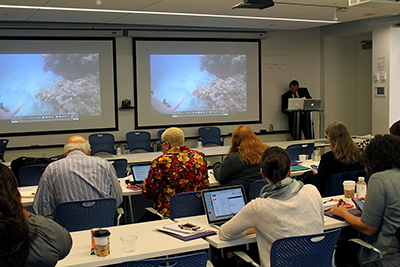
During the CBI, several videos were utilized to share information about disability culture, accessible information technology, disability accommodations, communication tips, and universal design. Video presentations included the following:
- STEM and People with Disabilities
- Part of Me, Not All of Me
- Captions: Improving Access to Postsecondary Education
- Building the Team: Faculty, Students & Staff Working Together
- DO-IT collaborates with CNT to open doors for people with disabilities
- Equal Access: Universal Design of an Academic Department
- Disability Sensitivity Training Video
- Ted Talk: I’m Not Your Inspiration by Stella Young
Student Panel Presentation Summary
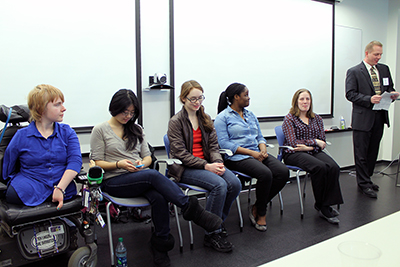
The student perspectives panel featured students with disabilities currently in undergraduate or graduate programs. Disabilities represented included mobility impairments, low vision, blindness, learning disability, and deafness. The panel featured five students with disabilities, including three who have worked in CNT research labs. The session was facilitated by CNT Deputy Director Chet Moritz and Diversity Manager Scott Bellman. Below are some of the responses to panel questions, and in some cases, edited for clarity.
What technology do you use?
- Screen reader, iPhone, text to speech, and sometimes braille
- Screen magnifiers and magnifying glasses
- Cochlear implant, CART (Communication Access Realtime Translation), and an FM system, which is a microphone the teacher speaks into that directly attaches to my cochlear implant
- A Surface (bigger than a tablet, but smaller than a regular laptop), and a smaller mouse
What kind of strategies do you use for taking notes and studying, and how do you account for any extra time needed to use any special technology?
- My graduate program has a lot of flexibility and often I work with my professors and classmates to share notes or read things out loud for me. I usually appreciate group work where we can all share our strengths and do work together.
- I often have to remind my professors to post notes electronically or read what they are writing in class. If I wasn’t always running around reminding them to give me accessible materials, it would take a lot less time to get my work done.
- I used to not have a note taker—this led to a lot of mistakes or missing important information. Now I use a note taker so I can pay attention, and often I work with classmates after class to discuss the lesson and fill in any gaps.
Have you ever had a situation where a professor wouldn’t be accommodating?
- I have had professors tell me I don’t need my accommodation. One professor told me I didn’t need a scribe because there was enough time. I finally had to go to disability services office to have them get the exam for me.
- I’ve had professors tell me they’ve never had a student with a disability before, and sometimes professors don’t understand that our discussion is in private and will tell the rest of the class about my disability or accommodations.
- Some professors hate if I take an exam through the disability services office and want to work with me to find a solution in class for my accommodation. Sometimes this works, but sometimes it doesn’t.
- I’ve had professors ask my opinion–as if I speak for all people with disabilities.
- I had a professor who was obviously trying, but instead of asking me, she emailed my advisor. My advisor doesn’t have anything to do with my accommodations and this created a weird situation. I prefer if a professor has a question, to just ask me first.
- I have had some professors try to follow extreme rules (like no electronics) or not understand accommodations, since they’ve never seen them used before.
What makes an environment more welcoming or accessible, and what would discourage you from participating?
- I was always daunted by science courses as a freshman, but what really helped was when a professor offered to have weekly meetings with me. This was welcoming to my different learning style.
- In my current lab, a big part of the data analysis is visual, so my professor is helping to turn that analysis into a digital form, so I can use the computer to analyze it for me.
- My lab creates accessible PDFs for me, which is helpful whether I want something read out loud or just magnified.
- One thing that really makes me feel welcome is when I tell people something isn’t accessible and they believe me. I’ve had people in the past try to argue with me about how something could be accessible if I used it differently; trust me, if I’ve come to you to talk about accessibility, I’ve already looked at the problem in about ten different ways.
- I often feel like I have to prove myself or that I’m a burden, so I like an environment where we can all contribute in a different way. It’s important to include everyone in the work and be appreciative of different strengths and weaknesses.
What are often people’s biggest surprise when working with a student with a disability?
- That there isn’t actually any extra burden. It’s usually very easy to incorporate students with disabilities.
- As long as the professor just asks the student, usually everything goes very smoothly.
Does your disability lead to a unique perspective in your field of study?
- Even though linear algebra is a very visual math, I was forced to learn it in a different way. This allowed me to reach out to other students and show them a different way to understand the equations.
- Any subject can be improved with a diverse perspective.
- Having to learn the information in a different way often leads me to knowing different concepts, or I learn how to access the information in a different way.
What would you want to tell ERC representatives about students with disabilities?
- Remember that I’m only speaking for myself, not every person with a disability. All people have different perspectives and may use different accommodations, even if they have the same disability. Including more people with disabilities in your labs can give you different perspectives and expand your program in a different way.
- Advocating is important. I didn’t have accommodations as a child because I didn’t think I could get them; however, as I was older, I realized how helpful they could be and how much I needed them. By offering easy opportunities for students to request accommodations, you make your lab a more welcoming place.
- Show people with disabilities that their ideas are welcome and that they can be included. Often people with disabilities are already solving problems in their every day life; harness those skills.
- Ask multiple people with disabilities their perspectives on different tools and programs, especially if that tool or program is supposed to be a solution for people with disabilities. A lot of people assume they know what I need without even asking my perspective.
Working Group Discussion Summaries
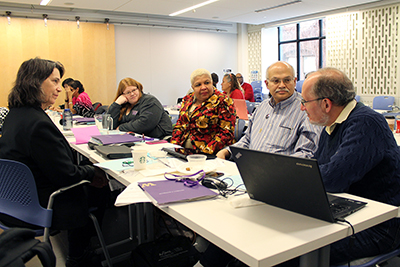
The following are examples of participant responses given to discussion questions.
What strategies used to recruit other underrepresented groups at your ERC could be repurposed for use in recruiting people with disabilities?
- Offer funds to create changes in labs and accommodate students with disabilities.
- Pay for students to be in internships in engineering labs.
- Email recruitment information to disabled services for students, veterans’ organizations, ADA office, specific school departments, high school counselors to target students with disabilities.
- Educate faculty on the needs of students with disabilities, how they can be included in the lab, the benefits to hiring these students, and disability culture.
- Include someone with a disability on our recruiting and leadership team.
- Use peer recruitment practices.
- Invite people with disabilities to go to engineering conferences and to participate in engineering events. Bring engineering topics and activities to multicultural and disability conferences.
- Reach out to parents of students with disabilities to show that engineering can be inclusive.
- Make sure websites and recruiting materials include people with disabilities and are designed in accessible formats.
- For our Research Experiences for Undergraduates (REU) program, make sure to invite students with disabilities, partner with community organizations that serve people with disabilities, and add the ERC to the university orientation tour.
- Host a sponsored field trip to invite underrepresented students to see how they can become engineers.
- Make sure our application is accessible.
- Increase focus on research experience for veterans and reach out to the veteran’s office to promote this experience.
What can be done at our ERC to engage faculty and staff (e.g., web developers, curriculum and product developers, distance learning providers) with accessible IT? Where can we link to appropriate resources from our ERC website?
- Look at the University of Montana Office of Civil Rights complaint and resolution regarding accessible IT and share their experiences with creating accessible products and environments; create similar procedures and templates for making accessible websites.
- Contact procurement, curriculum developers, department heads, and other decision makers to make sure we are using universal design principles when buying or creating the products students use.
- Create webinars on inclusion and accessibility for students, staff, and faculty.
- Include accessibility information in the ERC newsletter.
- Make sure we get leadership team buy-in.
- Create an accessible website and make sure we promote diversity on our website.
- Add universal design into engineering program major requirements.
- Requests for proposals (RFPs) should ask grant seekers to address accessibility issues in proposals.
- Make sure accessibility is included in our leadership meetings.
- Get a seed grant to have someone come and talk to our ERC about universal design or have AccessERC leaders come share more about accessibility and universal design.
- Use grant money to invite a student with a disability to intern at our ERC.
- Learn the appropriate ways to bring up disability and offer accommodations.
- Share AccessERC resources at the annual faculty retreat.
- Link to AccessERC from ERC’s diversity page, making it easy to find.
- Connect with the veteran’s office and share resources and opportunities.
In what ways can your ERC contribute to AccessERC products (e.g., website, Knowledge Base), activities (some funded by minigrants), and initiatives?
- With ten years of running a successful ERC and REU program, we’ve had a lot of practice and studies on what works and what doesn’t; we can provide input to AccessERC about across campus collaboration.
- We have strong momentum from our ERC’s Student Leadership Council regarding how to connect students with ERCs.
- We have a lot of experience getting faculty to think about function; if you really want engineers to listen, it’s helpful to show them research data.
- We can contribute our email list and our knowledge of running a multi-institutional REU program.
- Our supplemental grant for providing research to veterans of military service from the NSF is a great asset.
- We will take back all the information learned at this CBI to other organizations around campus and teach others about universal design and inclusion. We could create publications for faculty and staff.
- We will create podcasts and webinars to share the information and connect with others, including professional societies, the stem cell and life sciences communities, and REUs.
- We can connect AccessERC with the Environmental Engineering Community and share information about on our website.
- We think AccessERC should present to other ERCs and otherwise connect with them at NSF’s biennial meeting of the ERC program.
How do the viewpoints of the student panelists and individuals in the documentary Fixed affect how you would communicate with, recruit, and/or work with people with disabilities in your ERC?
- Be cognizant of diversity within the disability community; don’t assume one person speaks for everyone and don’t assume every person with a specific disability has the same accommodations.
- Don’t make assumptions about what a person’s limitations, capabilities, or needs are.
- Being people with disabilities inherently means they’ve overcome specific challenges and created solutions for problems; they are often already engineers and have inherent value that comes from solving issues related to their disabilities.
- Identity is always complex and disability is just one part of it.
- We can change how our ERC works with people with disabilities and become more welcoming to people with disabilities.
- Understanding the issues makes me better able to work with everyone and make sure everyone has an opportunity to succeed; I also have more confidence working faculty and others to explain why accessibility is important.
- It’s important to ask students how they want to label their disability or how they want to get accommodations.
- If a student with a disability doesn’t request an accommodation, don’t force one on them.
- If you universally design a class or lab to be as accessible as possible, many students with disabilities won’t need extra support.
- By inviting students with disabilities to engage with our ERC or products, we can see how they work for a variety of different people.
- As an anxious person, it made me feel better to remember that people with disabilities are always people first—I should just ask them what will be helpful to them. I may learn that they may feel anxious as well.
- Some people with disabilities don’t want a change or to be “fixed.” Before you begin to design a solution for a person, find out if there is even a problem to begin with.
CBI Participants
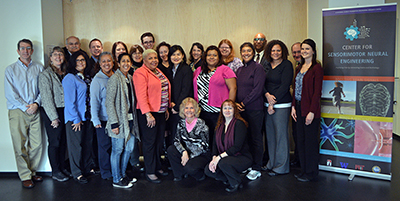
Stakeholder groups represented in the CBI included members of ERCs funded by the NSF. The following individuals participated in the CBI.
Scott Bellman
Center for Neurotechnology, CNT
University of Washington
Sheryl Burgstahler
Center for Neurotechnology, CNT
University of Washington
Harvey Borovetz
Revolutionizing Metallic Biomaterials, RMB
North Carolina A&T University
Alexis Campbell
The Center for Biorenewable Chemicals, CBiRC
Iowa State University
Roy Anthony Charles, Ph.D.
Future Renewable Electric Energy Delivery and Management Systems Center and Nanosystems ERC for Advances Self-Powered Systems of Integrated Sensors and Technologies, FREEDM & ASSIST ERCs
North Carolina State University
Chien-Fei Chen
ERC for Ultra-wide Area Resilient Electric Energy Transmission Networks, CURENT
University of Tennessee, Knoxville
Eric Chudler
Center for Neurotechnology, CNT
University of Washington
Lyla Crawford
AccessERC
University of Washington
Theresa Garcia
Center for Neurotechnology, CNT
University of Washington
Cameron Lee Gardner
Synthetic Biology ERC, Synberc
University of California, Berkley
Kenna Goodlaxson
The Center for Biorenewable Chemicals, CBiRC
Iowa State University
Shaila Kotadia
Synthetic Biology ERC, Synberc
University of California, Berkley
Pam McLeod
ERC for Re-Inventing the Nation’s Urban Water Infrastructure, ReNUWit
Stanford University
Martha Mitchell
ERC for Bio-mediated and Bio-inspired Geotechnics, CBBG
Arizona State University
Pilar O’Cadiz
Nanosystems for ERC for Translational Applications of Nanoscale Multiferroic Systems, TANMS
University of California, Los Angeles
Devdas Pai
Revolutionizing Metallic Biomaterials, RMB
North Carolina A&T University
Sarah Pixley
Revolutionizing Metallic Biomaterials, RMB
North Carolina A&T University
Denise Ritzman
ERC on Mid-Infrared Technologies for Health and the Environment, MIRTHE
Princeton University
Delia S. Saenz
ERC for Quantum Energy and Sustainable Solar Technologies, QESST
Arizona State University
Dominga Sanchez
Center for Inegrated Access Networks,CIAN
University of Arizona
Wilhelmina Savenye
ERC for Bio-mediated and Bio-inspired Geotechnics, CBBG
Arizona State University
Stefi Weisburd
Nanosystems ERC for Nanomanufacturing Systems for Mobile Computing and Mobile Energy Technologies, NASCENT, Lighting Enable Systems & Applications, LESA, ERC for Quantum Energy and Sustainable Solar Technologies, QESST
Univeristy of Texas at Austin, Rensellar Polytechnic Institute, Arizona State University
Roxanne Zellin
ERC on Mid-Infrared Technologies for Health and the Environment, MIRTHE
Princeton University
Communities of Practice
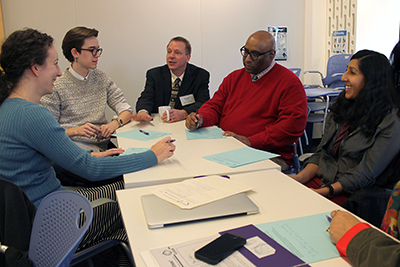
Populated with individuals who work at NSF-funded ERCs across the United States, members of the ERC Community of Practice (CoP) hosted by AccessERC
- discuss how to recruit participants with disabilities and accommodate them in their programs and activities;
- recruit their student participants with disabilities into disability-related e-mentoring, internships, and workshops to complement their activities;
- discuss the implementation of universal design to make facilities, products, and activities more welcoming and accessible to individuals with disabilities;
- discuss best practices and resources identified at capacity-building institutes; and
- share promising practices and lessons learned, as well as ideas about seed grants and new initiatives.
ERC associates can join the AccessERC CoP by sending the following information to swb@uw.edu:
- name
- position/title
- institution
- postal address
- email address
- name of the CoP
For information about other CoPs hosted by DO-IT, consult Communities of Practice.
Resources
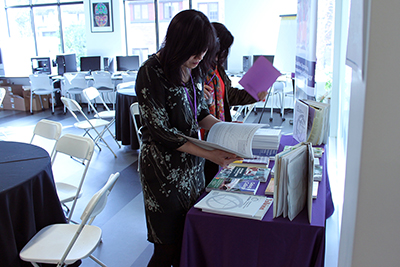
The DO-IT website contains
- information about DO-IT projects
- evidence-based practices that support project goals and objectives
- resources for students with disabilities
- educational materials for teachers and administration
DO-IT maintains a searchable database of frequently asked questions, case studies, and promising practices related to how educators and employers can fully include students with disabilities. The Knowledge Base is an excellent resource for ideas that can be implemented in programs in order to better serve students with disabilities. In particular, the promising practices articles serve to spread the word about practices that show evidence of improving the participation of people with disabilities in postsecondary education.
Examples of Knowledge Base questions include the following:
- Are electronic whiteboards accessible to people with disabilities?
- Are peer review tools accessible?
- Are there computer keyboards designed to be used with only one hand?
- Are touch screens accessible?
- Do postsecondary institutions have to provide assistive technology (for example, screen enlargement or voice recognition software) to students with disabilities who enroll in distance learning courses?
- Does a postsecondary institution have to provide specific hardware or software (known as assistive technology) that an individual with a disability requests so that they can access information technology used on campus?
- Are funds available specifically for captioning?
- Are there any web-based tutorials on web accessibility?
Individuals and organizations are encouraged to propose questions and answers, case studies, and promising practices for the Knowledge Base. Contributions and suggestions can be sent to doit@uw.edu.
For more information on making your ERC accessible and to learn more about accessible learning or universal design, review the following websites and brochures:
- More information on universal design in education can be found at the Center for Universal Design in Education.
- A brochure on designing an accessible ERC.
- A series of promising practices from the CNT may help in designing other ERCs--a brochure can be found at Promising Practices That Engage People with Disabilities in the CNT.
- A multimedia online collection of videos and publications on making STEM accessible can be found at Making STEM Accessible to Postsecondary Students with Disabilities.
- A brochure on the strategies and methods for having an accessible engineering lab can be found at Equal Access: Universal Design of Engineering Labs.
- A brochure on why accessible web design matters, and some resources to make your website accessible, can be found at Accessible Web Design.
- The University of Washington’s hub for information on accessible technology, featuring how to create and develop accessible documents, videos, and websites, can be found at Accessible Technology at the UW.
- More information about making an accessible makerspace can be found at Making a Makerspace? Guidelines for Accessibility and Universal Design.
- More information and resources for engineering education can be found at the AccessEngineering website.
- Information on accessible online teaching can be found in the brochure 20 Tips for Teaching an Accessible Online Course.
Acknowledgments
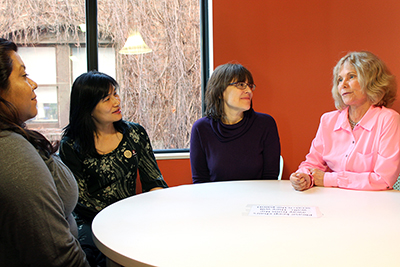
AccessERC capacity building activities are funded by National Science Foundation under Grant #EEC-1028725. Any opinions, findings, and conclusions or recommendations expressed in this material are those of the CBI presenters, attendees, and publication authors and do not necessarily reflect the views of the University of Washington or National Science Foundation.
DO-IT
University of Washington
Box 354842
Seattle, WA 98195-4842
doit@uw.edu
www.washington.edu/doit
206-685-DOIT (3648) (voice/TTY)
888-972-DOIT (3648) (toll free voice/TTY)
206-221-4171 (FAX)
509-328-9331 (voice/TTY) Spokane
Founder and Director: Sheryl Burgstahler, Ph.D.
Program Manager: Scott Bellman
© 2016 University of Washington. Permission is granted to copy this publication for educational, noncommercial purposes, provided the source is acknowledged.